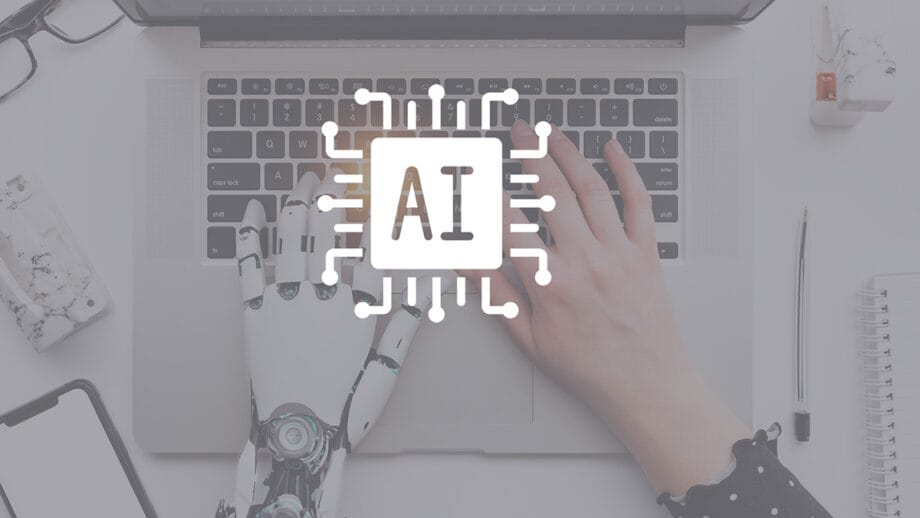Every era of publishing has had its disruption. The printing press democratized access to books, breaking the monopoly of manuscripts. Mass-market paperbacks put affordable novels into every pocket. The rise of ebooks challenged bookstores, while audiobooks redefined when and where people could read. Each change brought skepticism at first, but each eventually became part of the fabric of the industry.
Now, artificial intelligence is writing the next chapter. From helping writers overcome creative hurdles to producing quick cover mockups, AI tools are changing workflows across the spectrum of publishing. Far from replacing authors or designers, they’re proving to be accelerators – speeding up drafts, reducing costs, and giving more creators the chance to bring their stories to life.
The industry is at a point of possibility. While ethical debates continue, the momentum suggests a future where human creativity remains at the center, supported by intelligent tools that free up time, open new avenues of experimentation, and connect stories to readers faster than ever.
Breaking Writer’s Block With AI

A few things stall a project, like staring at a blank page. Whether it’s a novelist struggling with dialogue, a nonfiction writer trying to explain a complex idea, or an academic shaping an introduction, writer’s block eats into productivity. AI offers a way through.
Instead of waiting for inspiration, writers can prompt AI for options: alternative phrasings, ways to transition between sections, or even ideas for how a character might react in a scene. A romance author can ask for fresh takes on a meet-cute encounter. A historian can request draft summaries of primary sources to help shape a chapter. A self-help writer might ask for new ways to frame a motivational point or step-by-step plan.
For academics and technical writers, AI is particularly helpful in managing dense material. Drafting plain-language summaries, building outline structures, or even formatting citations can make the process less intimidating. This doesn’t mean the hard thinking goes away – it just means the tedious mechanics of organizing and smoothing prose take less time.
The key is balance. The author decides what fits their voice and discards the rest. The technology is a brainstorming partner – never a replacement for originality.
For indie authors, especially those balancing writing with day jobs and family responsibilities, AI can be the difference between finishing a manuscript and abandoning it. Instead of letting momentum die, writers can keep projects moving. That leads to more books in circulation, more voices heard, and a publishing landscape that reflects greater diversity.
It’s worth noting that not all readers embrace AI with equal enthusiasm. According to the Pew Research Center, a majority of Americans remain wary of AI in daily life, with many citing concerns about authenticity and trust. This hesitancy underscores why writers must use AI as a support tool rather than a creative substitute. Transparency and craft remain critical in reassuring readers.
Designing Covers at the Speed of Imagination
Book covers are as important as ever. In a crowded marketplace where readers make snap judgments online, a cover has seconds to grab attention. Traditionally, this process involved weeks of sketching, mood boards, and rounds of revisions.
AI accelerates the earliest stages. Authors and designers can spin up multiple mockups in an afternoon. Want to see how a thriller might look with bold, block lettering? Or test how a fantasy novel reads with a darker, gothic palette? AI makes it easy to explore and compare.
This is especially powerful in digital storefronts. On platforms like Amazon, covers are often seen first as thumbnails. AI allows quick A/B testing: which version stands out at 160 pixels high? Which color scheme pops against competitor titles? Some authors even run polls among readers, showing them multiple AI mockups and asking which one feels most compelling. This direct feedback loop saves time and improves marketing before the book even launches.
Of course, AI doesn’t create the final product. Human designers still refine typography, symbolism, and emotional tone. But the playground is wider and faster.
For hands-on experimentation, many authors explore AI writing and cover design tools. These services let writers and publishers test layouts, fonts, and styles in minutes, helping them quickly discover which direction feels right for their book. Some use the finished versions directly, while others treat them as springboards for deeper creative development.
Accessibility for Independent Authors
Independent publishing has exploded over the past decade. Bowker’s data shows more than 2.6 million self-published titles with ISBNs were released in 2023, a 7.2% increase over 2022. That growth illustrates both how vibrant the indie market is and how much demand there is for accessible tools.
Costs remain a challenge, though. Professional editing, formatting, and design can add up quickly. AI helps bridge that gap. A self-published writer can use AI to tidy prose, restructure chapters, or generate draft covers, saving hundreds or thousands of dollars in upfront costs.
What makes this especially exciting is the diversity it encourages. Authors from underrepresented communities – often without access to traditional publishing networks – can now bring their stories to life at lower cost. Writers in non-English markets can use AI translation tools to expand their readership globally. Niche genres can thrive because creators can test ideas without betting their savings on each project.
The result is a publishing ecosystem that’s more inclusive, more experimental, and more dynamic. AI gives indie authors the confidence to publish boldly, knowing they have affordable ways to refine their work.

Inside Publishing Houses: A Hybrid Future
AI isn’t just an indie author tool. Major publishing houses are integrating it, too. Editors are experimenting with AI to flag sections that may lose readers’ attention. Marketing teams test AI-generated blurbs, ad copy, and taglines. Designers generate concept boards more quickly before settling on final directions.
Instead of replacing people, AI is shifting how their time is spent. Projects that once took months of iteration now move faster. Editors can dedicate more time to developmental edits. Designers can focus on artistry instead of endless sketching. Marketers can run more campaigns without sacrificing creativity.
A hybrid model is emerging: humans make the key decisions, while AI handles the repetitive or time-intensive groundwork. This allows publishing teams to be more agile, meeting deadlines without compromising quality.
Economic Opportunity and Format Growth
Publishing has always been a business of tight margins. Every day saved in production and every dollar saved in design can mean the difference between breaking even and turning a profit. AI introduces efficiency that reshapes those economics.
By compressing drafting and design cycles, AI frees up resources that can be redirected. Indie authors can reinvest savings into advertising or editing. Publishers can expand marketing budgets, acquire more titles, or take creative risks they couldn’t before.
The most visible opportunity lies in digital formats. According to the Audio Publishers Association, audiobook revenue in the U.S. reached $2.22 billion in 2024, up 13% from 2023, with 99% of revenue coming from digital sales. That surge shows readers are hungry for content in multiple formats – and publishers need to keep up.
AI ensures they can. Faster production timelines mean more books reach the market on schedule. Sharper cover testing means more titles stand out in crowded stores. Streamlined editing means higher quality across the board. Economically, AI doesn’t just save money – it grows opportunity.
Ethics and Reader Trust
Even in an optimistic future, responsibility matters. Readers care deeply about authenticity. Some worry that AI-generated books will feel soulless, or that AI-generated artwork might infringe on existing designs. Authors and designers, too, raise questions about ownership, copyright, and originality.
These concerns shouldn’t be ignored. Instead, they should shape how the industry uses AI responsibly. One approach is to set clear publisher guidelines on when and how AI can be used, similar to how style guides dictate grammar and formatting. Another is disclosure – letting readers know when AI contributed to the process, but also emphasizing the human creativity and oversight that guided it.
The industry is already moving in this direction. Some small presses have begun noting in acknowledgments when AI was used for early drafts or design concepts. Others are experimenting with internal review systems to ensure originality in AI-assisted artwork. Far from eroding trust, these steps reassure readers that AI is being used thoughtfully, with human values and artistic integrity leading the way.
History suggests this skepticism is part of every transition. Ebooks were once feared as the end of print. Instead, they found their place alongside physical books. Audiobooks too faced doubts, and today they’re the fastest-growing format. AI will follow the same trajectory if it is wielded responsibly – questioned at first, then normalized, so long as it enhances rather than replaces human creativity.
Conclusion: A Collaborative Future

Artificial intelligence is not ending publishing – it is enriching it. Writers can lean on it to maintain momentum when inspiration runs dry. Designers can explore a wider sandbox without losing their artistic vision. Publishers can bring books to market faster, allocate budgets more strategically, and meet readers’ demand across formats.
For readers, this means more choice, more diversity, and more stories to enjoy. For authors, it means a greater opportunity to be heard. For publishers, it means agility in an industry where speed and quality matter more than ever.
The future of publishing is optimistic because it’s collaborative. AI is scaffolding; humans are the architects. Together, they can build a richer, more inclusive, and more dynamic publishing world.






